Posted: April 13, 2023 | Last Update: 26. Jun 2023
9 things to know before visiting Buddhist & Hindu Temples
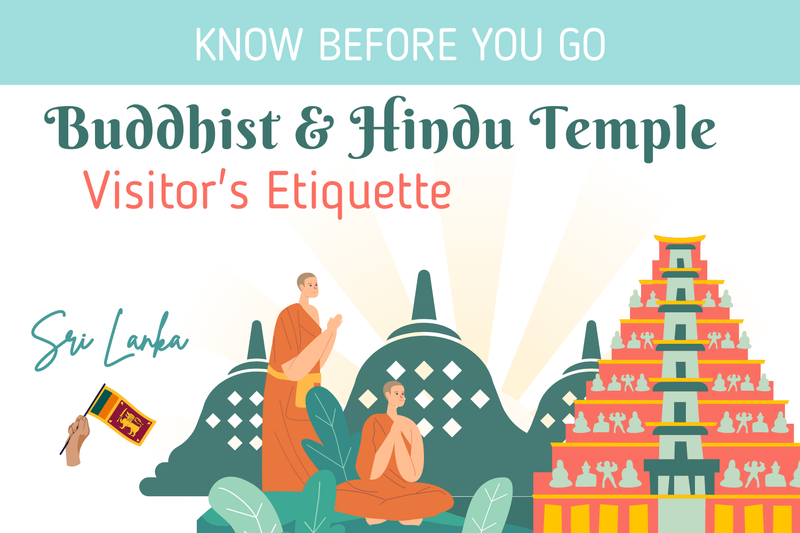
Visitor's Etiquette
Temples are places of worship and whether or not you are of the same faith, you should respect the local customs and traditions. Here is an overview of what we learnt about Buddhist and Hindu Temples in Sri Lanka:
The DOs
Here are some things you should DO when visiting a Buddhist or Hindu Temple in Sri Lanka
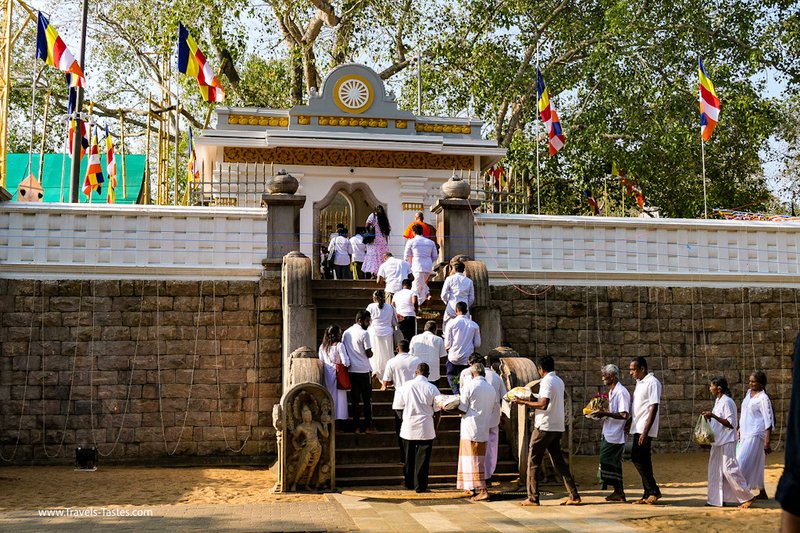
1. Remove your shoes
In all Buddhist and Hindu temples we visited in Sri Lanka, it is customary to remove your shoes before entering the main temple area. That does not only mean a specific building but literally the whole outside areal as well, regardless of the nature of the ground: be it paved, grass, pebbles or dirt.
This rule extends to visitors of all ages, even toddlers. Some places allow tourists to keep their socks on, but unless you absolutely have to, I recommend following local custom and going barefoot.
There is usually a stall somewhere near the entrance where you can store your footwear ‘for free’ (while it does not officially cost a fee, a tip is expected. We learnt the standard amount is around LKR 120).’
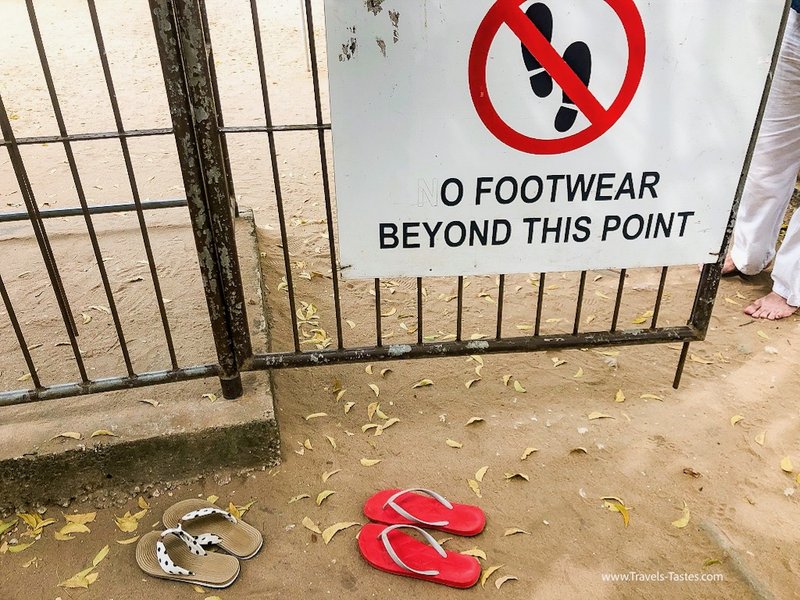
2. Wash your feet
(this is only applicable to Hindu temples)
As we delved deeper into Hindu religion and beliefs during our travels in Sri Lanka, we came across the practice of washing one’s feet before entering a Hindu temple.
This ritual serves as a form of purification, as Hindus view feet as impure due to their contact with the ground. It also signifies respect and humility towards the deities, who are believed to be highly sacred and divine.
The act of washing your feet is symbolic of cleansing yourself from sins and negative energies, and maintaining hygiene and cleanliness within the temple premises.
3. Follow photography rules
Some temples may have restrictions on photography or may only allow photography in certain areas. Always check for signs or ask for permission before taking photos or videos and be respectful of any rules or guidelines related to photography or recording. From my personal experience, the temple staff really appreciates you asking permission either way.
Also, avoid using flash as this might disrupt the peaceful atmosphere.
Do not ‘pose’ in front of relics, statues or stupas (see below 'DON'Ts).
If you want to be in a photo with them, I suggest standing sideways, facing them.
Find amazing tours for great photography and experiences here * (affiliate link)

Read more on amazing Temples here
 Dambulla Cave Temple and Golden Temple: a must-see destination
Dambulla Cave Temple and Golden Temple: a must-see destination
 TOP 9 Best Temples you Must Visit in Sri Lanka
TOP 9 Best Temples you Must Visit in Sri Lanka
the don'ts
Here are some things you should NOT DO when visiting a Buddhist or Hindu Temple in Sri Lanka
4. Expose knees/shoulders, please dress appropriately
As the temples are considered sacred places of worship, it is important to dress respectfully and in line with local customs.
For Buddhist temples in Sri Lanka, that means having to wear clothes covering the knees and the shoulders.
Short skirts or pants are not allowed and you will be asked to put on a sarong if you didn’t dress appropriately. The same is true for bare shoulders, so please avoid vests, tank tops etc. or bring a shirt or jumper you can wear on top.
As for the Hindu temples in Sri Lanka, the same rule of ‘no bare knees’ applies. However, bare shoulders are not a problem, given that most local Hindu women wear a saree.
In some temples (e.g. the Nagapooshani Amman temple on the island of Nainativu/Nagadeepa), men are required to bare their chest if entering the inner shrine of the temple.
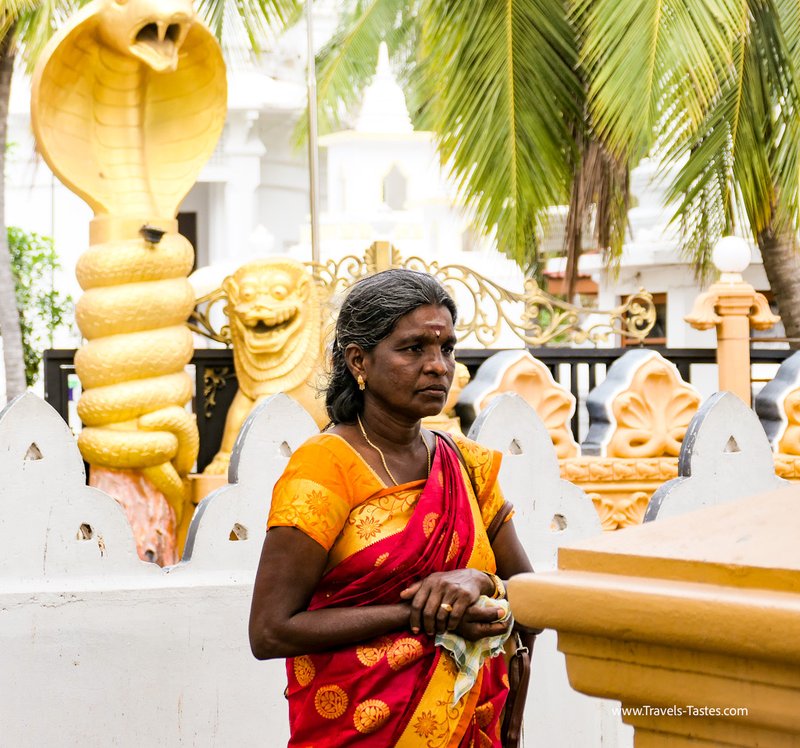
5. Don't turn your back
As a general rule of respect in Buddhist cultures, it is considered improper to turn your back towards a Buddha statue, Buddha image or a stupa which usually contains a relic. When you are in the presence of a Buddha statue, try to avoid facing away from it or showing your back directly towards it.
In many Buddhist traditions, it is common to circumambulate, or walk around, a Buddha statue or sacred object in a clockwise direction, keeping the sacred object to your right as you walk around it. This is often done in temples or other sacred sites and is considered a respectful way of showing reverence to the Buddha.
We experienced the same inside Hindu temples as well, where we unknowingly walked counter clockwise and were advised to change directions.

Book your once in a lifetime Sri Lanka experience with our trusted partners TourRadar*
*affiliate link
Good to know
Worship in Hindu and Buddhist temples is different to what you may be used to from home. Below we share some more 'good to know' points:
6. Worship and prayer
In the many Buddhist temples we have visited in Sri Lanka, we have always been surprised at how different their worship is to what we are used to in the western world.
Devotees can be seen praying individually or in groups all over the area, be it inside the temple itself, in front of a relic, under the sacred Bodhi tree or before any other revered image, statue or stupa.
The prayer can be silent, or a whispered mantra or chanting, sometimes led by a monk.
We found this experience wonderfully diverse, interesting and fascinating and are grateful that we were allowed to witness such beautiful forms of worship.
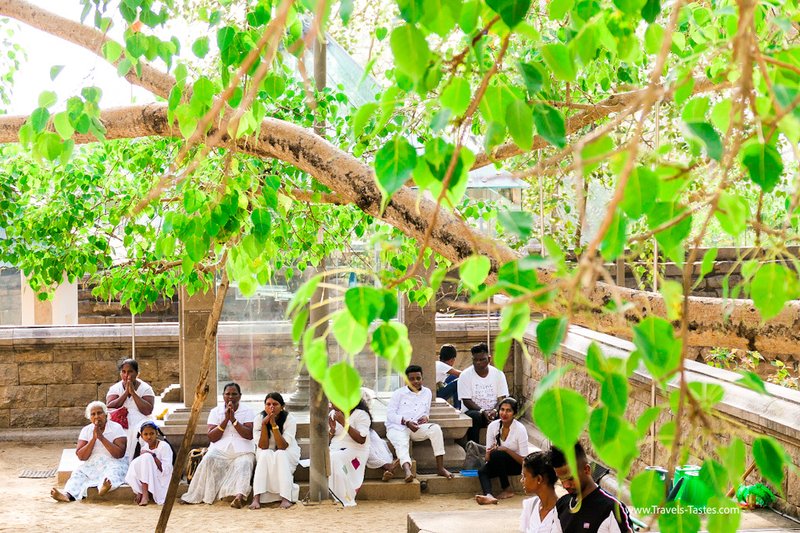
7. Offerings
Buddhist and Hindu devotees will usually not come to the temple empty handed.
As part of their ‘puja’ (worship), they bring offerings to the temples to express their devotion and gratitude and to seek blessings. Offerings include incense, flowers and food, with the latter later on being distributed among the monks or the temple goers.
Most temples have stalls and street vendors outside that sell flowers and other offerings.
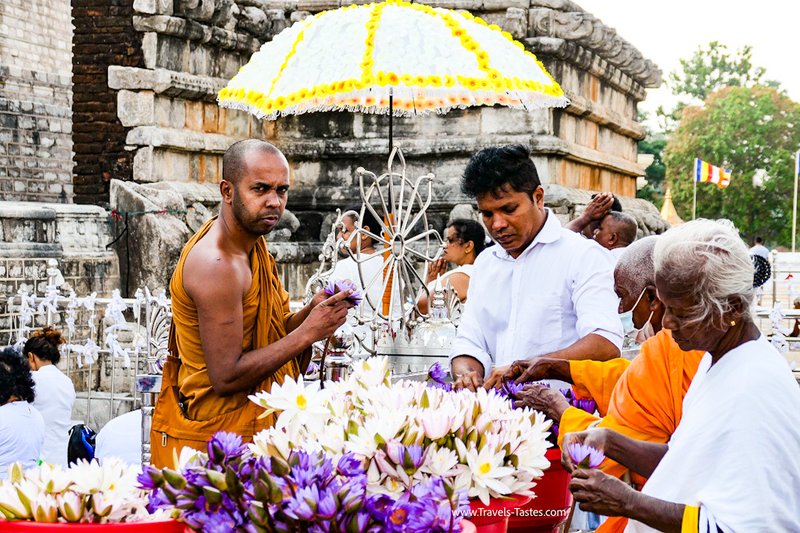

9. Wishing trees / Money trees
Wish trees or money trees are a common sight in Buddhist temples in Sri Lanka.
The practice involves tying coins with colourful cloth or ribbons to the branches of a tree or a designated structure within the temple grounds, where visitors can make offerings or tie pieces of cloth with written prayers or wishes.
People visit these trees to make offerings, express their prayers or wishes, and seek blessings or good fortune, from expressing their hopes to pass a pending exam to wishing for health or the blessing for a marriage.
This practice is also called ‘merit-making’, a way to accumulate positive karma and seek blessings for oneself and others.
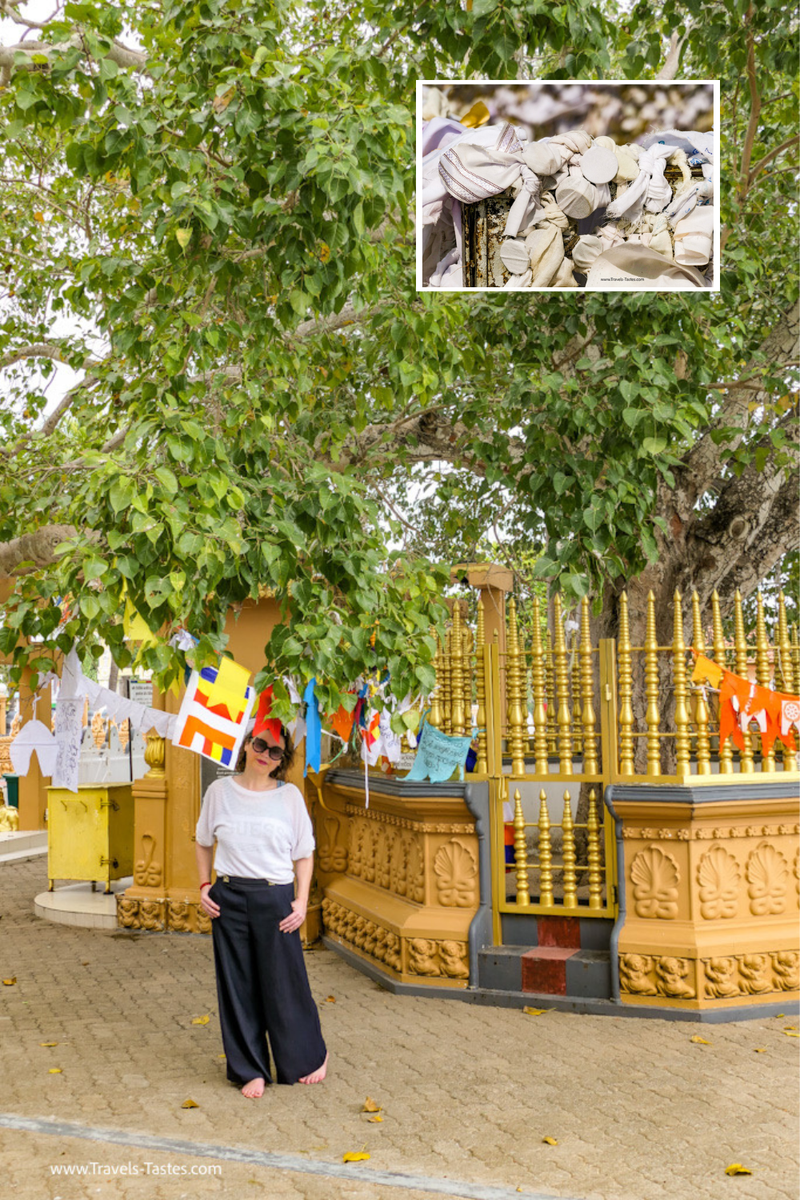

Hooked and ready to go? :)
Book amazing trips all over the world with our partner TourRadar * (affil)
These were the nine things we learnt in Sri Lanka’s temples. I am sure there are other pieces of information that would be useful to know, so if you think I have forgotten something, please let me and my readers know it in the comments below.
Related Posts
 Dambulla Cave Temple and Golden Temple: a must-see destination
Dambulla Cave Temple and Golden Temple: a must-see destination
 TOP 9 Best Temples you Must Visit in Sri Lanka
TOP 9 Best Temples you Must Visit in Sri Lanka
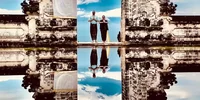 Gate of Heaven - Lempuyang Temple
Gate of Heaven - Lempuyang Temple
Comments
There are 0 comments.
